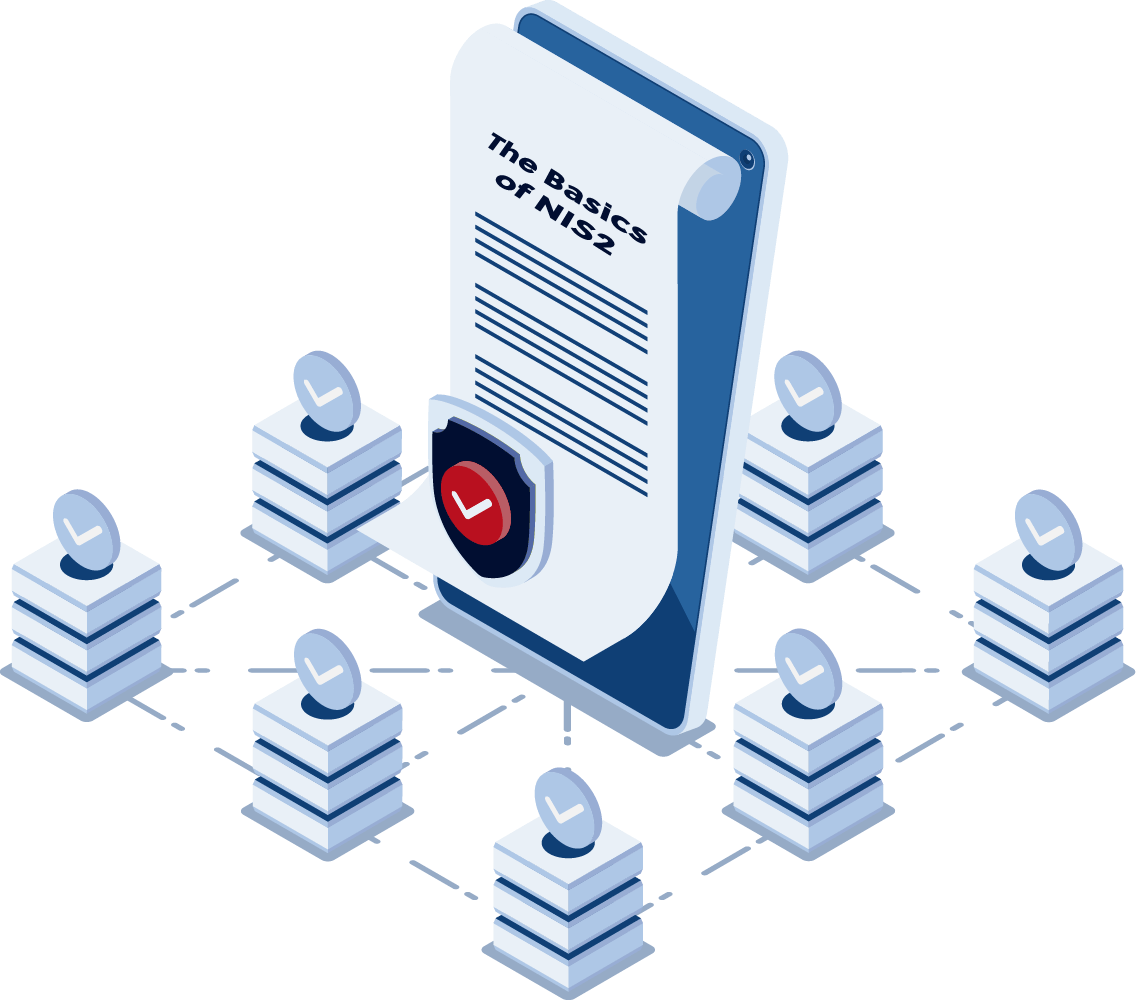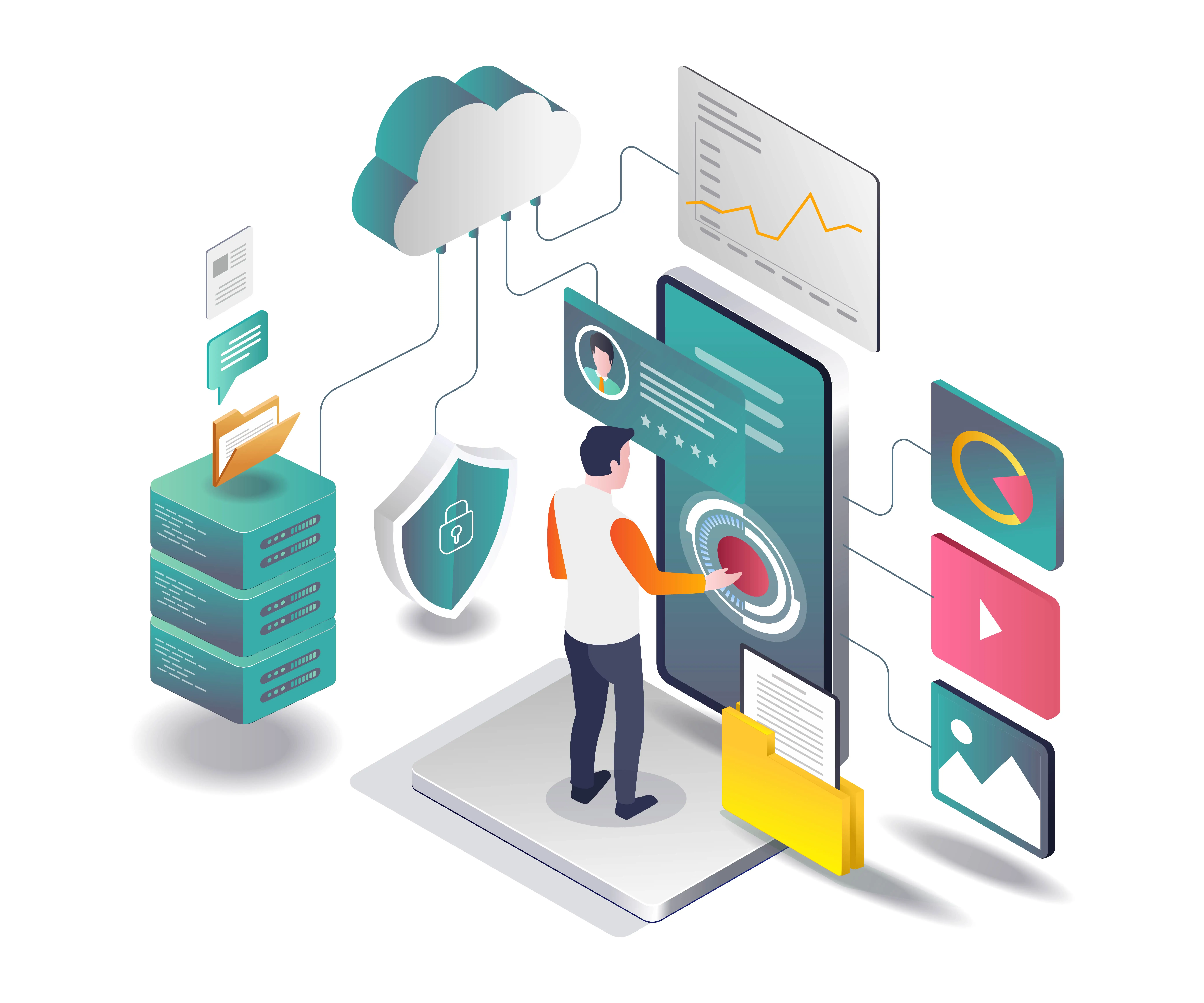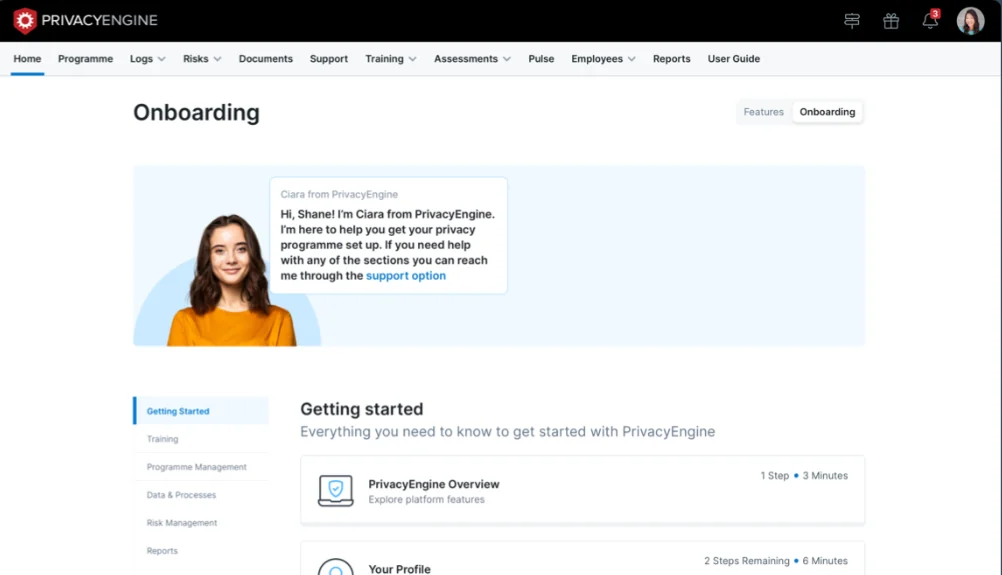In the world of data management, it is essential to have a comprehensive understanding of the different categories of data subjects. Data subjects play a crucial role in data management processes and have unique characteristics that need to be considered. By categorizing data subjects, organizations can enhance data analysis, streamline data processing, and ensure compliance with data protection laws. However, there are also challenges in categorizing data subjects, including overlapping categories and addressing ambiguity. In this article, we will delve into the various aspects of data subject categorization and explore future trends in this field.
Defining Data Subjects
Before delving into the different categories of data subjects, it is important to define what a data subject is. A data subject refers to an individual who can be identified directly or indirectly from the data collected about them. This can include customers, employees, website visitors, and any other person whose personal or non-personal information has been obtained.
Data subjects play a crucial role in the world of data management. They are not just passive entities whose information is collected and processed; they are active participants in the process. Data subjects provide the data, either actively or passively, and have control over their personal information. This control is not just a theoretical concept; it is backed by legal rights that data subjects can exercise.
Speaking of legal rights, data subjects have a range of rights when it comes to their personal data. These rights include the right to access their data, the right to rectify inaccurate information, and the right to erasure under certain circumstances. These rights empower data subjects and give them a say in how their data is handled.
The Role of Data Subjects in Data Management
Data subjects are not just passive participants in the data management process; they are integral to its success. Without data subjects, there would be no data to manage. They are the ones who provide the data that organizations rely on for various purposes, such as customer relationship management, marketing campaigns, and decision-making processes.
Organizations must recognize the importance of data subjects and their role in data management. By understanding the role of data subjects, organizations can ensure that their data management processes are transparent, fair, and compliant with data protection regulations. This understanding helps organizations build trust with data subjects, which is crucial in an era where data breaches and privacy concerns are on the rise.
Key Characteristics of Data Subjects
Data subjects possess certain key characteristics that make them unique in the context of data management. Firstly, data subjects have a personal stake in the data being processed as it often involves their personal or sensitive information. This personal stake gives data subjects a vested interest in how their data is handled and protected.
Secondly, data subjects have rights and responsibilities when it comes to their data. These rights, as mentioned earlier, include the right to access, rectify, and erase their data. Data subjects also have the responsibility to provide accurate information and to be aware of how their data is being used.
Lastly, data subjects have varying levels of awareness and understanding of data privacy and protection. Some may be well-versed in the intricacies of data protection regulations, while others may have limited knowledge. This variation in awareness and understanding makes it essential for organizations to engage in clear and effective communication with data subjects. By providing clear information and educating data subjects about their rights and the organization’s data management practices, organizations can foster a culture of transparency and trust.
The Importance of Categorizing Data Subjects
Categorizing data subjects brings numerous benefits to organizations in terms of data analysis, processing, and compliance. By grouping data subjects into categories, organizations can gain valuable insights through targeted analysis of specific groups. This allows for more focused decision-making and the development of personalized offerings or services. Additionally, categorization enables organizations to streamline data processing by establishing standardized procedures based on specific categories, saving time and resources.
Enhancing Data Analysis through Categorization
By categorizing data subjects, organizations can analyze data more effectively by looking at specific groups or segments. For example, categorizing customers based on demographics, preferences, or behavior patterns allows businesses to identify trends and tailor marketing strategies accordingly. This targeted analysis enables organizations to understand their customer base better and make data-driven decisions for improved outcomes.
For instance, a retail company may categorize its customers into different age groups, such as millennials, Gen X, and baby boomers. By analyzing the purchasing patterns and preferences of each group, the company can develop targeted marketing campaigns that resonate with each demographic. This approach not only increases the chances of attracting and retaining customers but also maximizes the return on investment for marketing efforts.
Furthermore, categorizing data subjects can also help organizations identify patterns or correlations that may not be evident when analyzing the data as a whole. By focusing on specific categories, organizations can uncover hidden insights that can drive innovation and improve business processes. For example, a healthcare provider categorizing patients based on medical conditions can identify commonalities among patients with similar conditions, leading to the discovery of more effective treatment options or preventive measures.
Streamlining Data Processing with Categories
Categorization also streamlines data processing by providing a structured approach. By defining clear categories and associated processes, organizations can ensure that data is handled consistently and efficiently. This not only helps in managing data quality but also simplifies compliance with data protection regulations.
For instance, a financial institution categorizing its clients based on risk profiles can establish different levels of security measures and access controls for each category. This ensures that sensitive information is only accessible to authorized personnel, reducing the risk of data breaches or unauthorized access. Additionally, categorization allows organizations to implement different retention periods for different categories of data subjects, ensuring compliance with legal requirements such as data retention regulations.
Moreover, categorization can also facilitate data sharing and collaboration within and across organizations. By categorizing data subjects in a standardized manner, organizations can easily identify and share relevant information with internal teams or external partners. This promotes efficient decision-making, fosters collaboration, and enhances overall data governance.
In conclusion, categorizing data subjects is crucial for organizations to unlock the full potential of their data. It enables targeted analysis, personalized offerings, streamlined data processing, and compliance with data protection regulations. By harnessing the power of categorization, organizations can make data-driven decisions, improve customer experiences, and drive innovation in their respective industries.
Overview of Data Subject Categories
Understanding the different types of data subject categories is crucial for organizations to effectively manage and protect data. Each category has its unique characteristics and considerations that need to be taken into account.
Personal Data Subjects
Personal data subjects refer to individuals whose data can identify them directly or indirectly. This includes basic personal information such as name, address, and contact details. However, personal data can also include more sensitive information such as financial records, medical history, or any data that can be linked to an individual’s identity.
Organizations handling personal data subjects must ensure that their processing activities are in line with data protection laws. This includes obtaining the necessary consent from individuals and implementing adequate security measures to protect their personal information. It is essential to prioritize the privacy and confidentiality of personal data subjects.
Non-Personal Data Subjects
Non-personal data subjects are individuals whose data cannot identify them directly or indirectly. This type of data is often used for statistical or research purposes and does not impact an individual’s privacy rights. Non-personal data subjects can include aggregated data, anonymized data, or data that has been stripped of any personally identifiable information.
While the privacy concerns may be lower for non-personal data subjects, organizations should still ensure compliance with ethical and legal considerations. It is important to handle non-personal data subjects responsibly and securely to maintain public trust and confidence in data processing practices.
Sensitive Data Subjects
Sensitive data subjects involve individuals whose data is considered particularly sensitive or requires special protection. This can include data related to race or ethnic origin, political opinions, religious or philosophical beliefs, or health-related information. Sensitive data subjects require a higher level of care and attention from organizations.
The processing of sensitive data subjects often requires explicit consent from individuals, as well as additional security measures to safeguard this sensitive information. Organizations must adhere to stricter regulations and ensure the highest level of data protection when handling sensitive data subjects.
It is important for organizations to recognize the sensitivity of this data and implement appropriate measures to protect the privacy and confidentiality of sensitive data subjects. This includes implementing strong access controls, encryption, and regular audits to ensure compliance with data protection regulations.
Legal Implications for Different Data Subject Categories
Each data subject category has its legal implications that organizations must consider to ensure compliance with data protection laws and regulations.
Data protection laws, such as the General Data Protection Regulation (GDPR), provide specific rights and obligations for data subjects. These laws aim to safeguard the privacy and personal information of individuals. It is crucial for organizations to understand these laws and their impact on different data subject categories to avoid legal consequences.
Failure to comply with data protection laws can result in severe penalties, including hefty fines and reputational damage. Organizations that handle personal data subjects must establish robust data protection policies and practices to protect the rights and privacy of all data subjects.
Data Protection Laws and Data Subjects
Data protection laws play a crucial role in protecting the rights and interests of data subjects. These laws grant individuals certain rights, such as the right to access their personal data, the right to rectify inaccuracies, the right to erasure, and the right to object to the processing of their data.
For example, under the GDPR, data subjects have the right to know how their personal data is being used, who has access to it, and for what purposes. They also have the right to request a copy of their data and have it corrected if it is inaccurate or incomplete.
Organizations must ensure that they have proper mechanisms in place to handle these requests and respond to data subjects’ rights effectively. This includes establishing procedures for data subject access requests, implementing secure data storage and transfer protocols, and training employees on data protection best practices.
Compliance Requirements for Different Categories
Different data subject categories may have different compliance requirements based on the sensitivity of the data involved. Organizations processing personal data subjects need to ensure they have obtained valid consent from the individuals whose data they are processing.
Valid consent requires organizations to provide clear and transparent information about the purposes of data processing, the types of data being collected, and the rights of the data subjects. Organizations must also give individuals the option to withdraw their consent at any time.
In addition to obtaining valid consent, organizations handling sensitive data subjects may have additional compliance requirements. Sensitive data includes information related to an individual’s race, ethnicity, religious beliefs, health, sexual orientation, and more. To ensure compliance, organizations may need to conduct privacy impact assessments to identify and mitigate any potential risks associated with processing sensitive data.
Furthermore, organizations may be required to appoint a data protection officer (DPO) if they process sensitive data subjects on a large scale or if it is a legal requirement in their jurisdiction. The DPO is responsible for overseeing data protection activities within the organization and ensuring compliance with data protection laws.
Overall, organizations must be diligent in understanding the legal implications for different data subject categories. By complying with data protection laws and implementing appropriate measures, organizations can protect the privacy and rights of data subjects while avoiding legal consequences.
Challenges in Categorizing Data Subjects
While categorizing data subjects brings numerous benefits, it also presents challenges that organizations need to address to ensure accurate and effective categorization.
When it comes to categorizing data subjects, organizations often encounter the issue of overlapping categories. This challenge arises from the difficulty of assigning data subjects to a single category. In reality, individuals may possess characteristics or attributes that make them fall into multiple categories simultaneously. This complexity makes it challenging to determine the appropriate classification for each data subject. To mitigate this challenge, organizations must establish clear guidelines and criteria for categorization. These guidelines should take into account the various factors that may contribute to overlapping categories, allowing for a more accurate and consistent classification process.
Another significant challenge in data subject categorization is addressing ambiguity. Ambiguity can arise due to the subjective nature of certain categories or variations in interpretation. For example, some categories may require subjective judgments based on personal opinions or cultural perspectives. This subjectivity can lead to inconsistencies and discrepancies in categorization, making it difficult to ensure accuracy and reliability.
To overcome this challenge, organizations should engage in continuous monitoring and evaluation of their categorization processes. This includes seeking feedback from data subjects themselves, as they can provide valuable insights into their own categorization. By actively involving data subjects in the categorization process, organizations can gain a better understanding of their perspectives and experiences, helping to refine and improve the accuracy of the categorization guidelines.
Furthermore, organizations should regularly update their categorization guidelines to address any ambiguity that may arise. This involves reviewing and revising the criteria used for categorization, taking into account any feedback received from data subjects or changes in legal or regulatory requirements. By keeping the categorization guidelines up-to-date, organizations can ensure that their categorization process remains accurate, relevant, and compliant with applicable laws and regulations.
Future Trends in Data Subject Categorization
As technology continues to advance, the field of data subject categorization is expected to evolve. Several trends are likely to shape the future of data subject categorization.
One of the most significant trends that will impact data subject categorization is the rapid development of artificial intelligence (AI) and machine learning (ML) technologies. These advancements have the potential to revolutionize the way data subject categorization is conducted. AI and ML algorithms can automate and improve the categorization process, enabling organizations to handle larger volumes of data more efficiently. With the ability to analyze vast amounts of information, these technologies can identify patterns and relationships that may not be immediately apparent to human analysts.
Furthermore, the advancements in data analytics and pattern recognition algorithms will enhance the accuracy and granularity of data subject categorization. By leveraging sophisticated algorithms, organizations can classify data subjects with greater precision, allowing for more targeted analysis and decision-making. This increased granularity will enable organizations to gain deeper insights into their data subjects, leading to more effective strategies and personalized experiences.
The Impact of Technology on Data Subject Categories
Technological advancements, such as artificial intelligence and machine learning, are likely to have a significant influence on data subject categorization. These technologies can automate and improve the categorization process, enabling organizations to handle larger volumes of data more efficiently. Additionally, advancements in data analytics and pattern recognition algorithms can enhance the accuracy and granularity of data subject categorization.
Another trend that will shape the future of data subject categorization is the growing focus on individual privacy rights and the global expansion of data protection regulations. As individuals become more aware of their privacy rights and demand greater control over their personal data, organizations will need to adapt their data subject categorization practices accordingly.
Predicted Changes in Data Subject Categorization
With the growing focus on individual privacy rights and the global expansion of data protection regulations, it is expected that data subject categorization will become more standardized and regulated. This may involve the development of industry-wide guidelines or international standards for data subject categorization, ensuring consistent practices across organizations and jurisdictions.
Moreover, as the volume and complexity of data continue to increase, organizations will face challenges in accurately categorizing data subjects. Overlapping categories and ambiguity can lead to inconsistencies and errors in data subject categorization. To address these challenges, organizations will need to invest in robust data governance frameworks and employ data stewards who can ensure accurate and consistent categorization.
In conclusion, understanding the different categories of data subjects is essential for effective data management. By categorizing data subjects, organizations can enhance data analysis, streamline data processing, and ensure compliance with data protection laws. However, challenges such as overlapping categories and ambiguity must be addressed to ensure accurate and consistent categorization. As technology continues to advance, the field of data subject categorization is likely to evolve, with increased automation and standardization. By staying informed about these categories and anticipating future trends, organizations can navigate the complex landscape of data subject categorization successfully.




